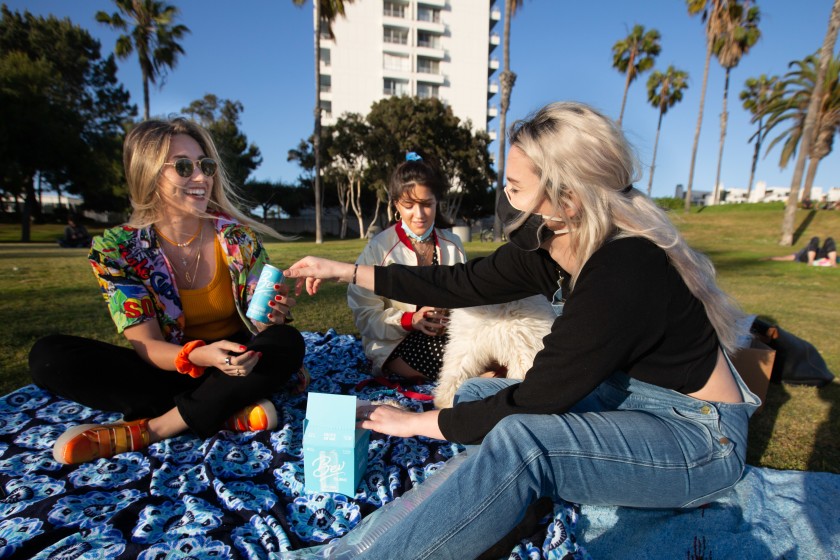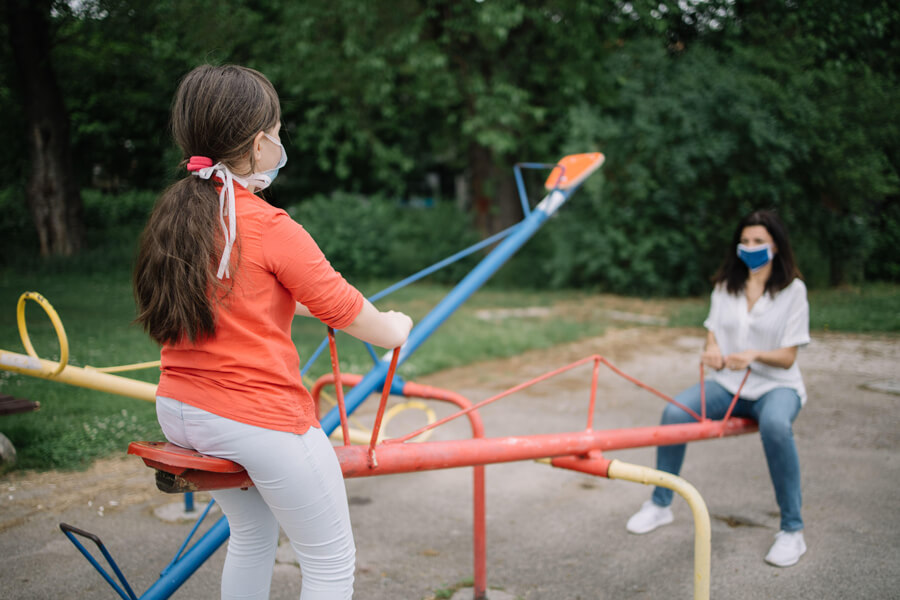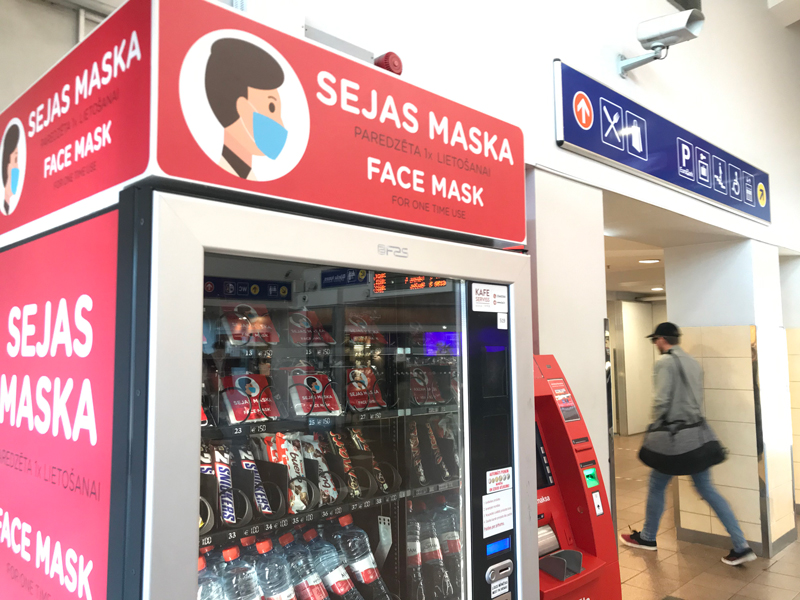With many states and towns lifting strict stay-at-home orders, people are faced with a growing number of new decisions. Mundane logistical questions — Should I go get my hair cut? When can I picnic with friends? What should I wear to the hardware store? — during the Covid-19 pandemic carry implications for personal and public health, in some cases life-or-death ones.
When multiplied through the population, seemingly small decisions have the power to either dramatically slow or accelerate this pandemic. It puts the nuances of decision-making front and center.
We might like to think that our behavioral choices, especially around something so important as a global pandemic, are based purely on the best information we have.
But that isn’t the case, say experts in behavioral science and social psychology. In fact, we are all susceptible to biases that push and pull our brains in invisible ways.
“The idea is if people just have information, then they will make the rational choice. And that’s just wrong.”
Damon CentolaThis happens in part because of overconfidence in our ability to know why we make the choices we do. “There’s a powerful belief in the value of introspection, which much of social psychology and psychological science has shown is a mistake,” says Jennifer Lerner, a psychologist at the Harvard Kennedy School. “We are not good at understanding what our brains are doing…. Even things that are conscious are affected by nonconscious factors in ways we don’t know.”
Her work and that of others can help us better understand how our own decision-making processes are being affected in these unprecedented times — and perhaps how we can inoculate ourselves and others against unwise decisions.
Here are five factors that can sway how we choose to behave during the pandemic:
The bias of the here and now
In a lot of ways, we are creatures of the present. “We tend to make decisions based on the information that is most resonant, closest at hand, most recent,” says Nicholas King, a biomedical ethicist at McGill University in Montreal. So, if you are lucky enough to not know anyone sickened with Covid-19, you might not be prompted to take rigorous precautions.
It’s easier, King says, to look out the window and see what is going on around you than to dive into epidemiological models and data-based projections.

Social distancing and wearing masks are two public health choices facing people during the Covid-19 pandemic. In May, women gathered for a small, outdoor celebration for a friend’s birthday in Santa Monica, California, with one choosing to wear a mask.
As another part of this preference for the present, we tend to evaluate our behavior on what we perceive as the “status quo” — even if that “new normal” is radically different from what we were used to just months ago, King says.
This tendency can backfire, however, because we also have a bias toward action.
It’s not unlike feeling sick and going to the doctor. Often the best course of action is not a drug or procedure but “watchful waiting.” To a lot of people, though, that is the hardest pill to swallow. Instead of being the sound, evidence-based choice, watchful waiting feels like, “we should be doing something, but instead we’re doing nothing,” King says.
In the pandemic, our new status quo — of physical distancing — has been that sort of watchful waiting period. And now people want to take action and make different decisions about their preferred behavior. “I think a lot of the push to reopening is sort of this idea that we need to do something,” King says. Yet back in March, he points out, “doing something” was implementing physical distancing measures — the very thing that some people interpret as inaction today.
Colored by emotions
Although we might think of ourselves as rational, research shows that even the most minor of choices can be colored by our mood.
“Emotions have a profound effect on the process with which people make decisions,” says Lerner, who coauthored an article about emotion and decision-making in the 2015 Annual Review of Psychology. Especially when dealing with incidental emotions — a kind of background feeling unrelated to the decision at hand — we are often unaware of how it influences our thinking.
For example, Lerner and colleagues have found that anger — not uncommon when our lives are affected by a force outside our control — tends to lead to less thoughtful analysis. “Angry people don’t question themselves,” she says. “They don’t say, ‘Gosh, I wonder if I’m right about this. I’m not sure if I’m using the right information.’” And that can lead people to make less-than-ideal choices.
Perhaps even more prevalent than anger, these days, is sadness, as people lose not just loved ones or their own health but also income and freedom of movement. Unlike anger, though, “sadness actually makes you think more deeply” and can help to process information in a more robust, systematic way, Lerner says.
Lerner’s work has also shown that sadness can lead to poor financial decisions. “Sadness arising from loss triggers an implicit goal of replacing that loss,” she says. In experiments described in 2008 in Psychological Science, she and her colleagues found that study participants prompted into a sad mood were more willing to pay overly high prices to buy things immediately than those who were in a neutral mood. “So there’s a real risk, when you’re sad, of over-shopping and paying too much for things,” Lerner notes. This is especially troubling during a recession spurred by a loss-filled event like a global pandemic.
Fear has also been shown to be an influencer: Research done after 9/11 found that fear heightened people’s perception of risk, and so, too, their intentions to take precautions.
Searching for certainty
Another prevailing force right now is extreme uncertainty, which, as King puts it, “sucks.” This instability can lead people to seek narrow ranges of information in a quest for confirmation of their perspectives.
“One of the most important things that we all need to do is to become more comfortable with uncertainty. Relying on false certainty leads to a lot of bad decisions.”
Nicholas King“Confirmation bias is a way of minimizing uncertainty: Because you’re only choosing evidence that confirms your preexisting world view, you can maintain a certain confidence level of what you already believe,” King says.
This, like anger, leads people to be less considerate of potentially wiser perspectives and options for behavior, such as weighing multiple sources of information about the safety of large gatherings like protests or religious services.
Adding to the trouble, this drive often perpetuates misguided certainty that can lead to similarly misguided behavioral choices. “In policy arenas and personal life — even in science — the person who declares things with certainty tends to garner more attention and a lot more trust than the person who expresses uncertainty,” King says.
Which, he says, gets things exactly backward.
“I trust the person who honestly and transparently discusses the uncertainties involved … much more,” King says. “One of the most important things that we all need to do is to become more comfortable with uncertainty. Relying on false certainty leads to a lot of bad decisions.”
Peer pressure
We rarely make decisions in a vacuum — even if they seem entirely personal. And we are influenced by those around us more than we might think.
A virus or rumor can transmit through simple contact. But for a more complex social behavior, like wearing a mask to protect others, the dynamics are much more complicated, explains Damon Centola, who studies social networks and social epidemiology at the Annenberg School for Communication at the University of Pennsylvania.
In this case, social networks act more like prisms, as Centola described in the 2019 Annual Review of Sociology. These networks actually “shape how we view the information we’re receiving, how responsive we are to the new behaviors we’re exposed to, and whether or not we accept them,” he says. “The idea is if people just have information, then they will make the rational choice. And that’s just wrong.”
As much as any recommendations from the CDC or the county health department, your peers affect the choices you make.

As lockdowns ease, many are facing difficult decisions about daily life — from seeing friends to venturing out to public spaces. Those decisions are influenced by a number of factors of which we are often not aware.
CREDIT: CATALIN STOICA / ALAMY STOCK PHOTO
Centola gives the example of physical distancing early on in the pandemic. If you were the only one in your office to decide to not attend a meeting — or the only one of your friends to skip a dinner party — in an effort to physically distance, it might have had adverse professional or social effects. But if most of your colleagues (or friends) established the norm of not attending in-person gatherings, that decision becomes the default. The same might go for wearing masks in your neighborhood.
This lesson has takeaways for everyone up the decision-making chain. “This is a really important factor when we think about behavioral diffusion and really any public health policy that involves this kind of decision-making process,” Centola says.
When healthy is easy
To understand how to help people make better decisions in this pandemic, scientists are looking to insights gained from previous work on pro-social health behaviors. Gretchen Chapman, who studies social and decision sciences at Carnegie Mellon University, has done decades of research in this field, such as on people’s decisions to get vaccines.
“Trying to change people’s beliefs and feelings about vaccination is not very effective — it’s more effective to intervene on the behavior directly by making the behavior easy,” she says. (This can be as simple as automatically scheduling flu shot appointments.)
Any way to make the desired behavior decision as frictionless as possible is key, Chapman says. If you want people to decide to mostly avoid going to grocery stores, “grocery delivery should be really easy and accessible,” she says. Or if you’re trying to ensure mask wearing, have disposable masks available for people before they enter a store.

A clear finding of health behavior research is that making healthy choices easy and convenient leads more people to adopt those behaviors. Mask-wearing is a prime example. In Latvia in May, a public vending machine offers disposable protective face masks.
CREDIT: PICTURE ALLIANCE / GETTY IMAGES
What also helps people make decisions about new behaviors is simply seeing massive change in their environment. As Chapman notes from her home in Pittsburgh, where springtime birds chirp in the background, “just looking around at my environment, I would never guess that this was a serious situation. But the governor closed public schools, and all the other universities have closed — I kind of sit up and take notice. I’m, like, ‘Oh, wow, I guess this must be a really big deal.’”
Centola has researched adoption of other highly visible pro-social behaviors, such as the decision to put solar panels on your house. Many government programs have tried information campaigns and financial incentives. But most effective were programs that installed panels on a certain number of houses per neighborhood, creating a contagion dynamic leading neighbors to follow the new norm.
What we can learn – and what we can do better
A better understanding of how we make decisions can not only help us make better ones, but it can also help experts learn how to nudge us toward healthy behaviors.
Chapman and colleagues, for example, are studying how different messages — straight informational versus one that includes an estimate of how popular something is (how many Americans are wearing masks, for example) — change people’s intended behavior, such as their plans to physically distance or wear a mask. She expects that whom the messaging depicts will also influence the results: “If they learn that other people like them in their neighborhood are wearing masks,” they may be more likely to plan to do the same, she says.
One grand challenge of public-health decision making is helping everyone make the best choices. As Centola says, where he lives in Philadelphia, a lot of people work jobs they cannot do from home. So there are large networks of people whose lives, by necessity, haven’t changed all that much.
“There’s a kind of equity issue built into a lot of the public-health campaigns,” he says. More affluent networks of people have the luxury of being able to shelter at home more or less full-time and act on high-level information, he notes. Whereas, “disadvantaged populations, even if they’re hearing that information, it’s just not as relevant to their circumstances, it’s not manageable. And so it gets ignored.” That can also be reinforced by social networks, Centola says. In this case, “inequities are reinforced by what they see their peers doing.”
One of the big challenges throughout the pandemic has, of course, been figuring out what the best decisions even are, given the unknowns about the Covid-19 virus. Good decisions may seem like moving targets as official recommendations keep changing, Chapman says. Which is all the more reason to be aware of not just the information we are getting, but also the actions we choose to take — or not.




